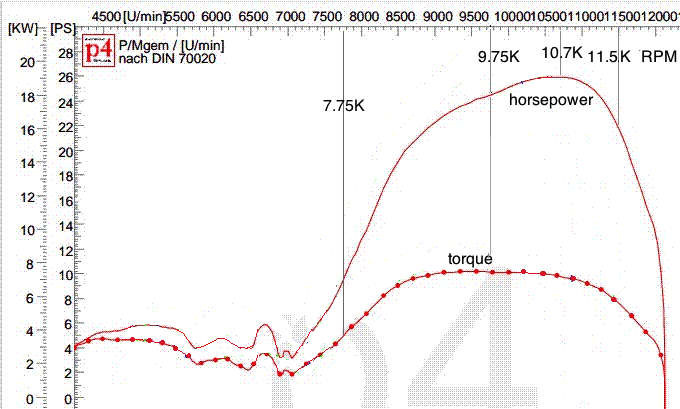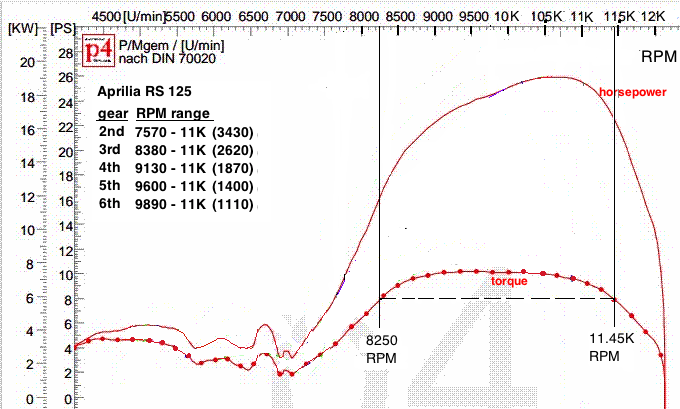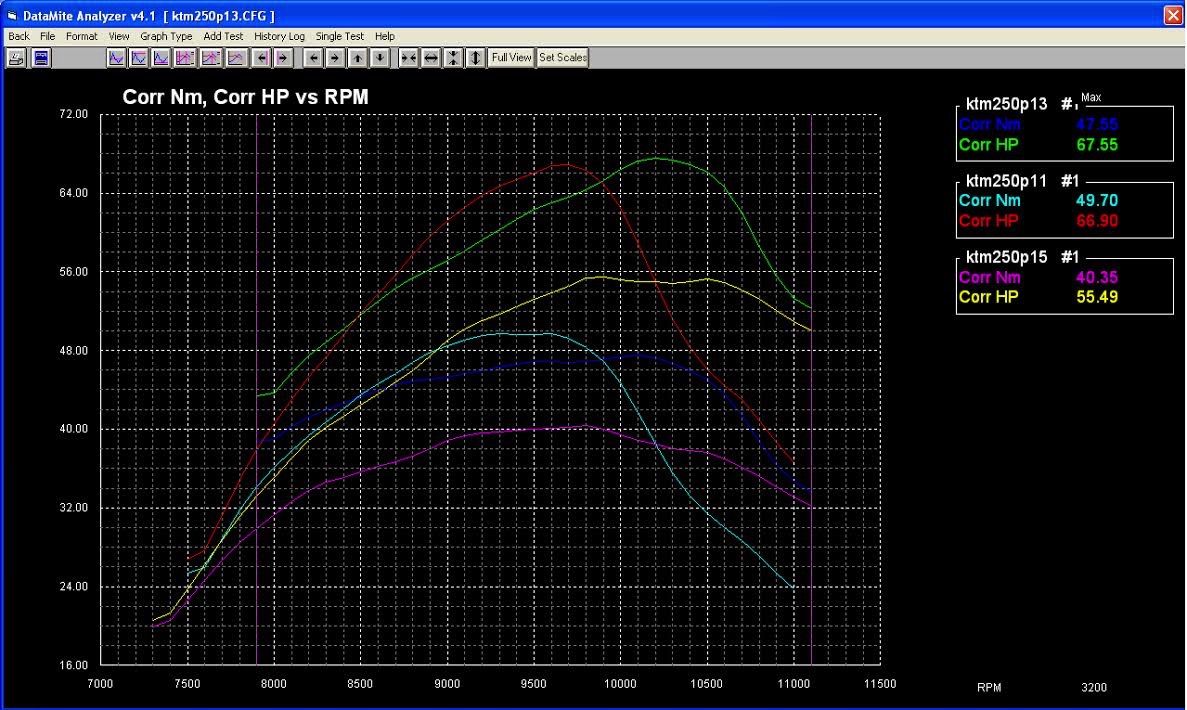|
Below is a horsepower graph that shows the different peak power RPM (PPRPM) of the engine and the pipe. Can't see it? Look at the second graphic where I made the raw engine power in gray.  The two peaks have separated because the pipes PPRPM is too far from the engines. Looking at various dynos you'll almost never see this because usually the two are close enough that the pipe PPRPM herds in the engine PPRPM to be under it (seemingly in sync). Not so in this example. The owner put on a home made expansion chamber that was poorly designed with too long a header.  Now look at the top red and green power graphs from my friend Johns KTM SX250 using different header lengths and the same pipe.  Using my calculator for determining the peak power RPM for the transfers and the exhaust (without the effect of expansion chamber), and using the lowest one (because it is the limiting factor) I calculate this 2003 SX250 engine has a peak power RPM (PPRPM) of 11250. But this 250 shouldn't be rev'd more than 10,500 RPM because of stress on the piston (which depends on piston velocity). The red graph peaks at 9750 and the green at 10250. 10250 is closer to the PPRPM of the engine and so I would expect it to have a better average power over the RPM spread between shifts. If I use the known spread from the EXC (because I can't find that for the SX on-line) it is 1,500 RPM from 4th to 5th. So the red graph has an average power over 1500 RPM (up to the peak power point) of 59.1 hp. The green graph has 62.5 hp which is 5.7% more which confirms my suspicion that to get the most power out of an engine the pipe and the engine PPRPM should be the same. This engine has porting which is better for a 125 than a 250. Its cylinder should be lowered and then the transfers raised a tad (because lowering the cylinder lowers the transfer duration more than the exhaust duration) so that the raw engine PPRPM will be lower, hopefully lower than 10,500. So before designing a pipe for an engine you should check and 1) use my porting calculator to see if the exhaust port and transfers have nearly the same PPRPM. You can lower transfers ports using JBWeld but you can only lower exhaust ports by lathing metal off the base of the cylinder (and then adjusting the squish clearance for correct velocity using my squish calculator). 2) make sure you aren't designing the engine/pipe for a higher RPM than will exceed 25.2m/s mean piston velocity. (most engines under 125cc don't need to be checked) Analyze it at this site. Then design the pipes PPRPM to match that of the engine or at least to be as close as possible to it (within 750RPM). |